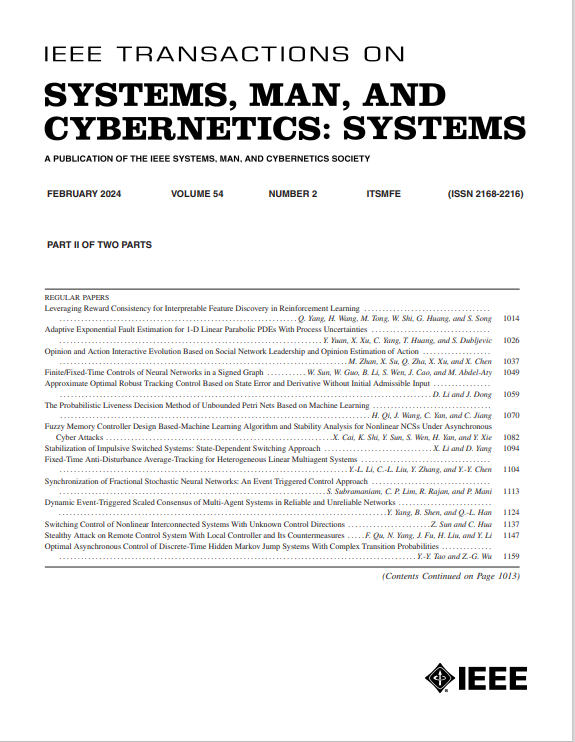离散供应链系统的资本均衡切换控制
IF 8.6
1区 计算机科学
Q1 AUTOMATION & CONTROL SYSTEMS
IEEE Transactions on Systems Man Cybernetics-Systems
Pub Date : 2025-04-08
DOI:10.1109/TSMC.2025.3554754
引用次数: 0
摘要
由于时间的推移和需求变化的不确定性,两级供应链金融系统转变为一个动态的、不确定的多模型离散系统。节点公司资本水平的持续波动对节点公司的经营活动和系统的稳定性都产生了重大影响。有效的资本均衡切换控制可以调节系统的稳态。因此,本文介绍了一种基于系统资本基本模型的动态资本均衡策略。此外,基于Takagi-Sugeno模型,设计了一种由鲁棒控制策略和资本均衡策略组成的资本均衡切换策略,以实现系统的稳定性。此外,多组仿真试验不仅验证了不同外需分布下资本均衡切换策略的有效性,也验证了所提方法的科学性和可靠性。最后,本文分析了内部资本调度对资本均衡和整个系统的影响。本文章由计算机程序翻译,如有差异,请以英文原文为准。
Capital Equilibrium Switching Control for Discrete Supply Chain Systems
Due to the passage of time and uncertain demand changes, the two-level supply chain finance system transforms into a dynamic and uncertain multimodel discrete system. The continuous fluctuations in the capital levels of node companies significantly impact both the business activities of these companies and the stability of the system. Effective capital equilibrium switching control can adjust the system’s steady state. Consequently, this article introduces a strategy for dynamic capital equilibrium based on a fundamental model of the system’s capital. Additionally, a capital equilibrium switching strategy, composed of a robust control strategy and a capital equilibrium strategy, is designed based on the Takagi-Sugeno model to achieve stability. Furthermore, multiple sets of simulation tests not only validate the effectiveness of the capital equilibrium switching strategy under different external demand distributions but also confirm the scientificity and reliability of the method proposed. Finally, this article analyzes the impact of internal capital scheduling on both the capital equilibrium and the overall system.
求助全文
通过发布文献求助,成功后即可免费获取论文全文。
去求助
来源期刊

IEEE Transactions on Systems Man Cybernetics-Systems
AUTOMATION & CONTROL SYSTEMS-COMPUTER SCIENCE, CYBERNETICS
CiteScore
18.50
自引率
11.50%
发文量
812
审稿时长
6 months
期刊介绍:
The IEEE Transactions on Systems, Man, and Cybernetics: Systems encompasses the fields of systems engineering, covering issue formulation, analysis, and modeling throughout the systems engineering lifecycle phases. It addresses decision-making, issue interpretation, systems management, processes, and various methods such as optimization, modeling, and simulation in the development and deployment of large systems.
 求助内容:
求助内容: 应助结果提醒方式:
应助结果提醒方式:


